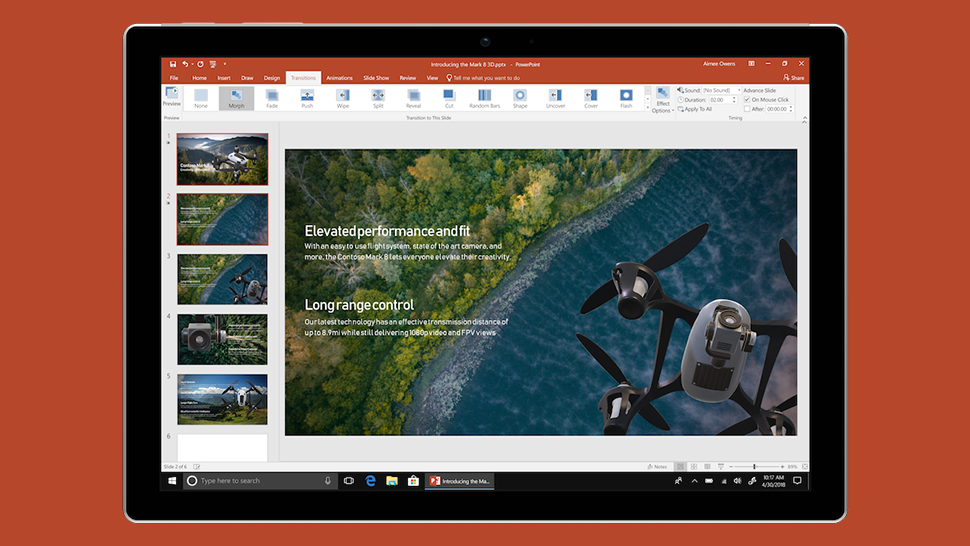TechRadar Verdict
There's no doubting the power and prowess of Word, Excel, PowerPoint and Outlook, which are better than ever. However, Microsoft has made sure that Office 365 is now the more compelling package.
Pros
- +
Industry-leading features and tools
- +
Intuitive, accessible interface
Cons
- -
Not a huge number of updates since 2016
- -
No support for OneDrive and the cloud
Why you can trust TechRadar
Microsoft Office doesn't need much of an introduction, and Office 2019 is the latest and greatest version of the suite for business users. Importantly, it's yours for a one-off payment, as opposed to the regular subscription fees needed for Office 365.
Even though many users will now be switching to Office 365, if you need Word, Excel, PowerPoint and Outlook on a single computer and can live without various cloud-sharing services, then Office 2019 is still worth a look. Here's what you get and how it works.
- The best free office software you can install right now
- All the latest deals on Microsoft Office packages
Key features and apps
Get hold of Microsoft Office 2019 and you've got the most powerful office applications at your fingertips: Word, Excel and PowerPoint offer a level of depth and control that you don't get from the likes of Google Docs or open source office alternatives.
We've laid out the key components of Office 2019 below – click through on any of the sections to read our detailed reviews, which outline all the features and options available in these products.
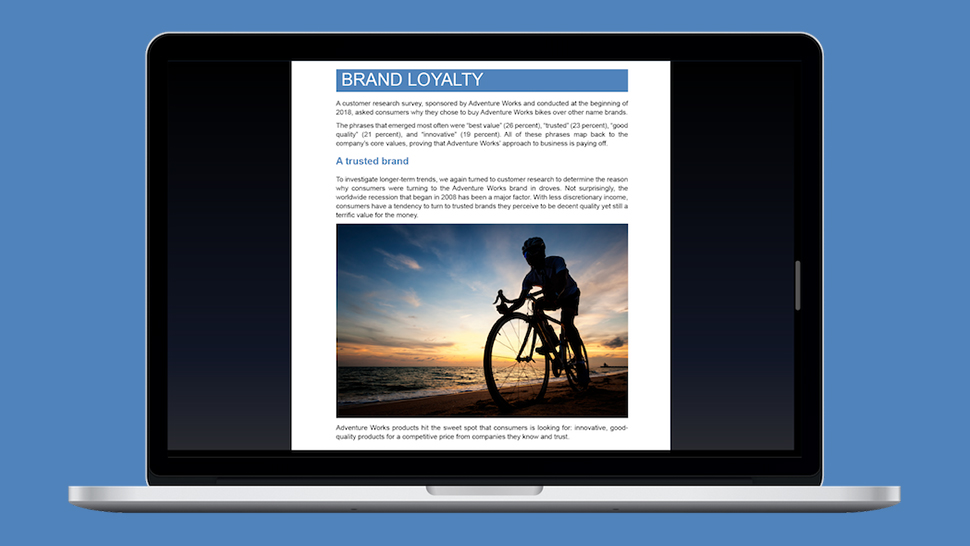
Word – Able to ace any kind of word processing job, Word is equally comfortable drafting letters, wrangling huge essays, or whipping up quick newsletters. Despite its wealth of features and tools, the app manages to still come across as accessible and intuitive, thanks to that Ribbon interface. Even after 30 years, this remains the word processor to beat.
Excel – Packed with functions, no other spreadsheet program really comes close to Excel in terms of advanced capabilities. New features have been thin on the ground in recent years, but that's only because it already has everything you're going to need – from crunching the numbers on the annual budget to organizing the tea rota.
PowerPoint – The all-powerful presentation tool gets some new tricks in Office 2019, including support for advancing slides with Bluetooth pens, a new zoom interface for jumping between slides, and a cool morph transition. It might not be as lean as some of its newer rivals (like Google Slides) but it's hard to beat in terms of overall capabilities.
Outlook – The one email, calendar, contacts and tasks application to rule them all, Outlook continues to impress, though like Excel it hasn't been blessed with many upgrades in recent years. Still, it's guaranteed to do a fine job of managing your emails across multiple accounts, and now features a new Focused inbox for your most important messages only.
Access – Microsoft's venerable database application is still available to you when you pick up an Office 2019 purchase, should you have a need for it, and the app remains as solid and dependable as ever. New in this version are some improved chart types, support for a handful of new data types, and accessibility upgrades as well, but nothing major.
Note that Microsoft hasn't included OneNote in the Office 2019 package, though you can choose to install the 2016 version if you want to. Instead, Microsoft is pushing users towards the Windows 10 OneNote app (universally available to everyone), which should be enough to take care of all your note-taking needs.
Office 2019 vs Office 2016
Office 2019 doesn't come with a wealth of new features compared with its predecessor, or anything that's necessarily going to change the game in terms of your productivity, but it does include a few upgrades that are worth highlighting.
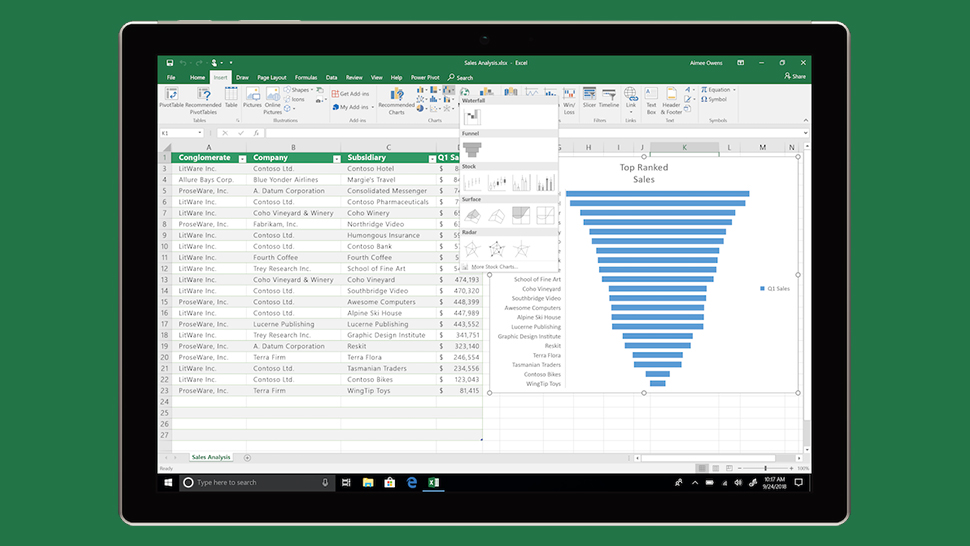
As we mentioned above, Outlook's new Focused inbox attempts to identify the emails that are most important to you, and pushes the rest into the background (though you need a Microsoft Exchange account to use it). There's also support for having your messages read out loud, and better time zone support in the calendar component.
In Word, you've got improved translation, text-to-speech, and text spacing options, as well as better support for stylus pens and digital scribbles within your documents. Also new is a Focus mode that strips away the surrounding distractions when you need to just read through something on-screen (like the reading mode in most browsers).
Over in Excel, you've got similar improvements to the inking capabilities, as well as a smattering of new functions and new chart types to get your teeth into. You can also now drop 3D models into your spreadsheets and view them from all angles. Various other tweaks and enhancements to features like PivotTables are included too.
Also as mentioned above, PowerPoint gets an impressive new Morph transition, and better support for digital inking (as with Word and Excel). The 3D model support we've already referred to is included in PowerPoint as well, and you can now export a slideshow as a 4K video, should you find that a better option for sharing your work with others.

Office 2019 vs Office 365
There's no doubt about it, Microsoft would prefer to take your money every month rather than just a one-off payment with no follow-up. With that in mind, it's keeping a number of features as Office 365 exclusives, so you should be aware of what you're missing out on before you make a decision on which Office version to go for.
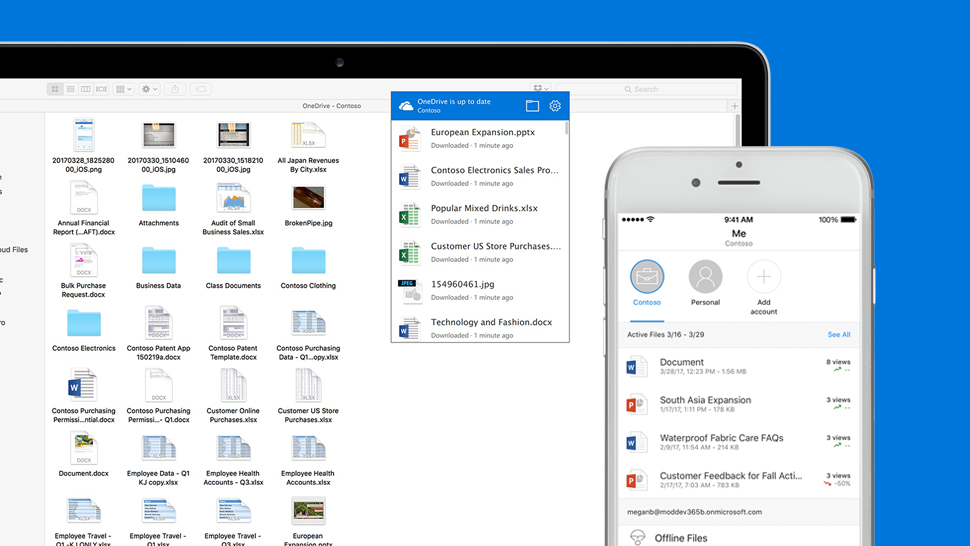
Office 2019 won't receive any feature improvements over time, apart from security fixes and bug-squashing updates. Office 365, meanwhile, gets new features regularly – all of the new stuff in Office 2019 is already available to Office 365 users. To get better features in Office 2019, you'll need to upgrade to the next one-off Office purchase, if Microsoft decides to release another one.
Another key feature exclusive to Office 365 is OneDrive – that means cloud storage for all your users, simple syncing across multiple machines, and real-time collaboration on documents. There are plenty of benefits to OneDrive if you're working as a team, including basic online versions of the Office apps.
You can get some of these OneDrive features by using the free, consumer version of OneDrive available to everyone – but that requires combining business and personal accounts, and you only get 15GB of storage for free. As cloud-based computing becomes more important, OneDrive integration is one of the key reasons why you might want to jump to Office 365.
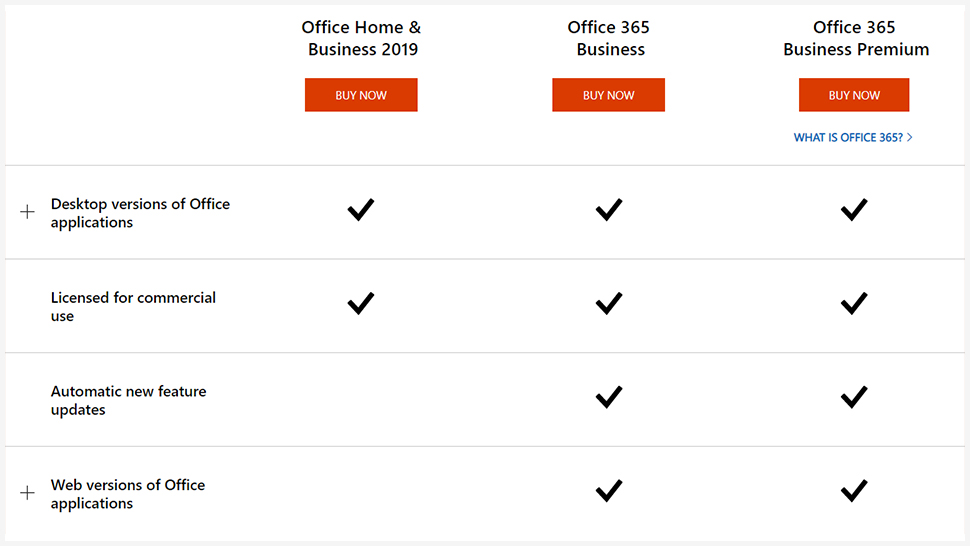
Office 2019 will set you back £249.99/$249.99 for use on a single PC. Office 365 Business starts at £7.90 + VAT per user per month with an annual payment ($8.25 in the US), or £9.50 + VAT per user per month if you're paying month-to-month ($10 in the US). Those Office 365 fees cover application installations across five computers, too.
- Here’s our guide on how to install Office 2019
Office 2019: competition and verdict
In terms of features and capabilities, the likes of Word, Excel and PowerPoint are still hard to touch. However, the cloud-based features and regular updates of Office 365 are well worth considering for your business needs, even if you do have to fork out money to Microsoft every month.
If you are going to pay a monthly fee, G Suite is also a strong contender for your cash. Its apps aren't quite as powerful as Microsoft's, but they're slick and fast, and built with the web in mind. They might suit you better if you need speed and simplicity rather than a long list of features that you're never going to use.
It really all comes down to you and the needs of your business. If you work on a single computer, with not much need for sharing and collaborating on documents, then Office 2019 remains hard to beat – you can make your single payment, get your software installed, and then you're set for years to come.

Dave is a freelance tech journalist who has been writing about gadgets, apps and the web for more than two decades. Based out of Stockport, England, on TechRadar you'll find him covering news, features and reviews, particularly for phones, tablets and wearables. Working to ensure our breaking news coverage is the best in the business over weekends, David also has bylines at Gizmodo, T3, PopSci and a few other places besides, as well as being many years editing the likes of PC Explorer and The Hardware Handbook.
